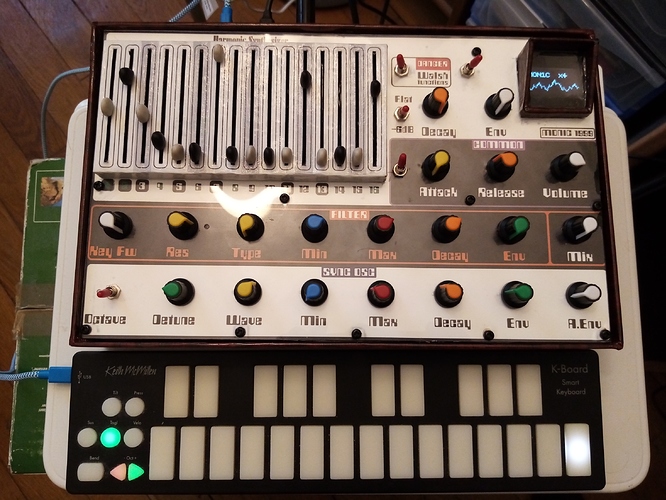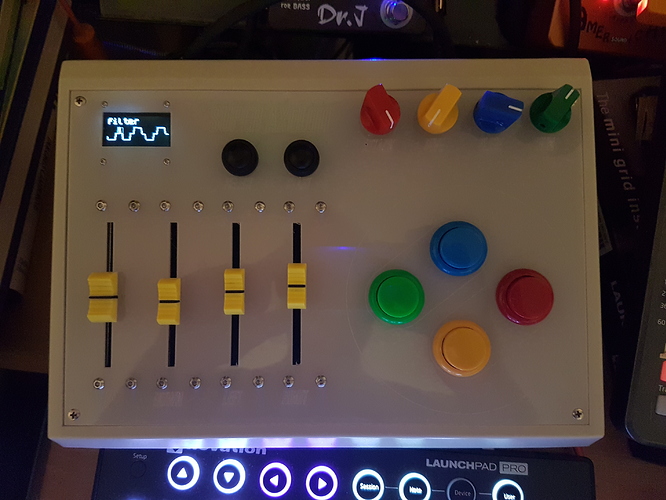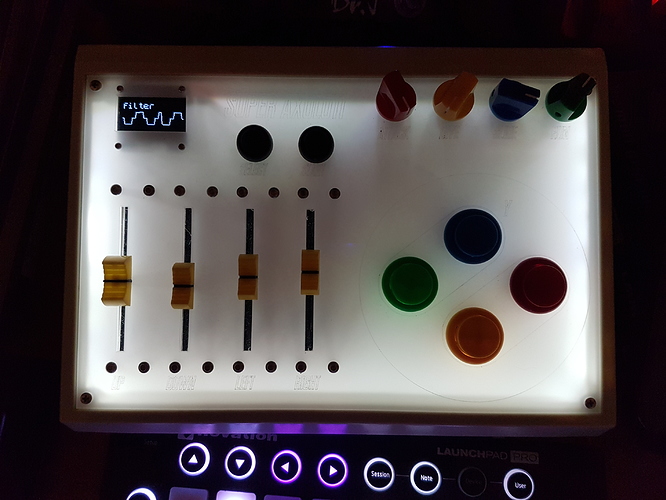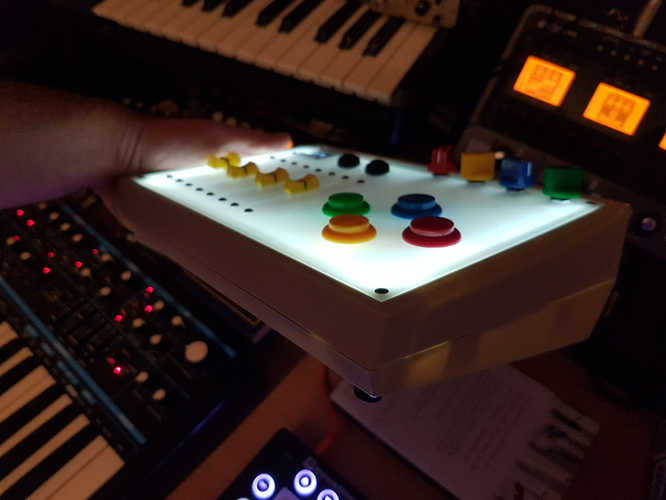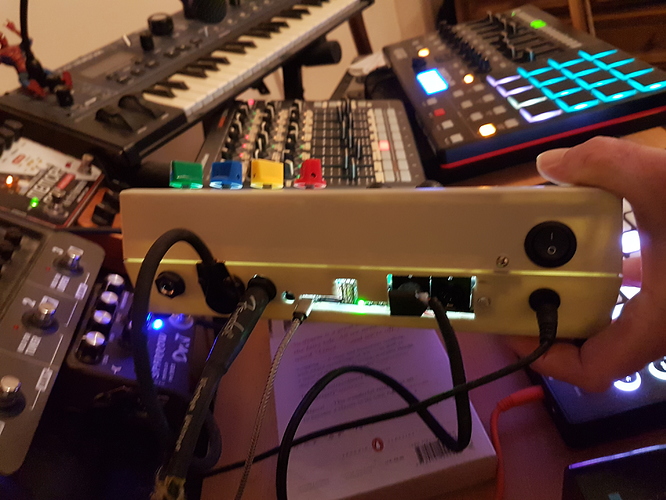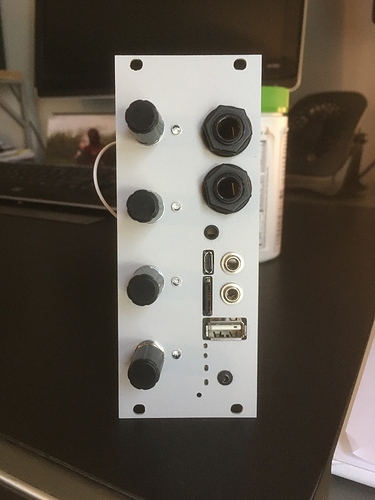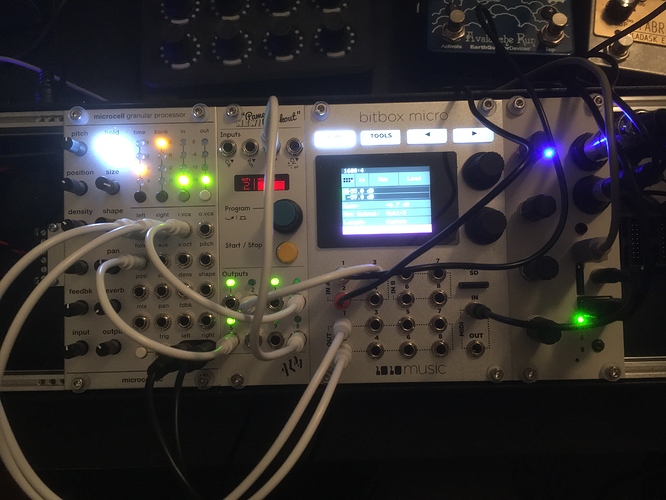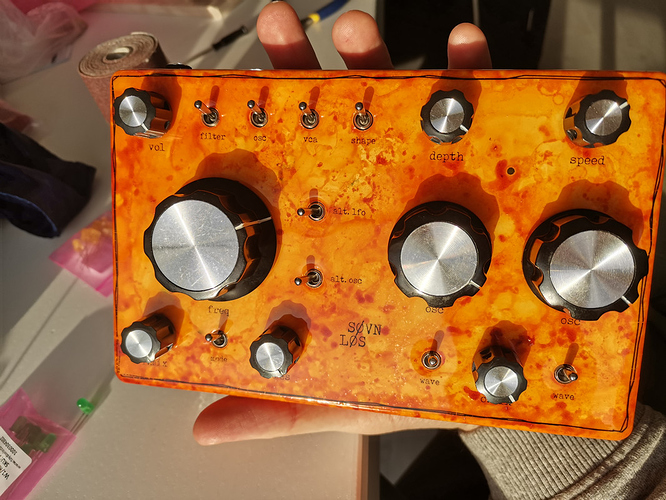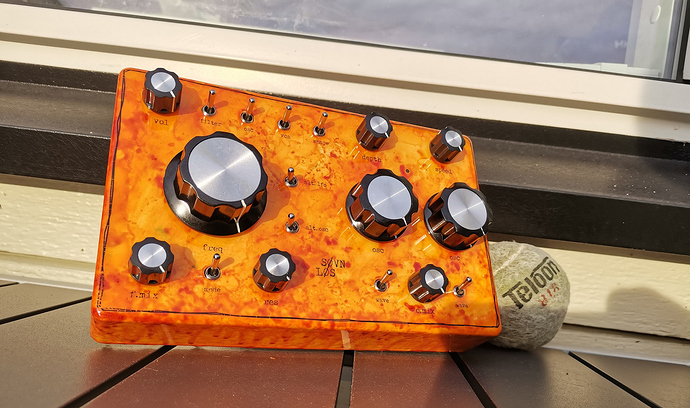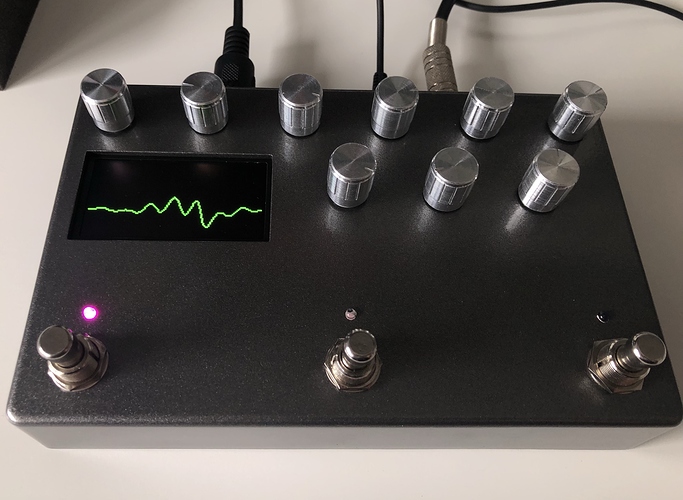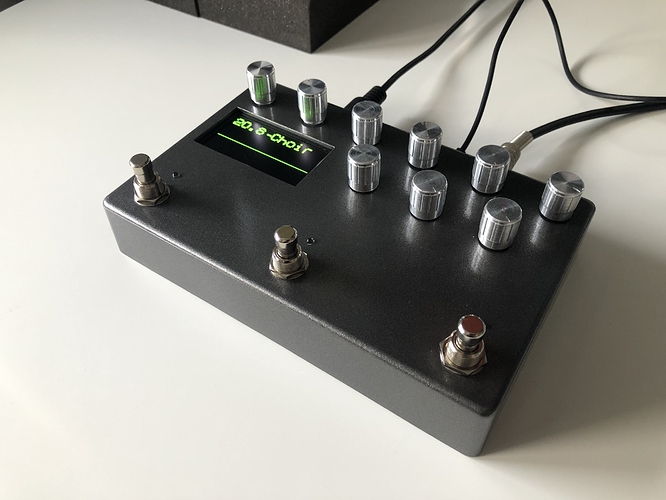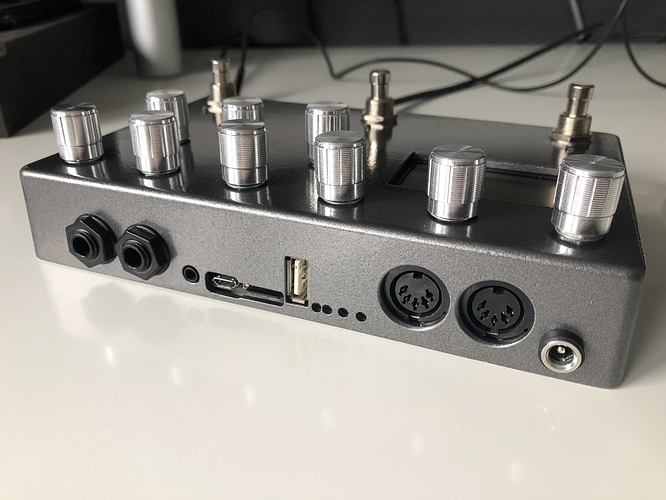Hello everybody. Today I'm proud to present the Poli-Ax.
This creation is the culmination of the wisdom imparted on me by the many good people of this forum, and all over the internet, to help someone who went into this project without knowing what GPIO means, or what 3.3v logic is, or how MIDI is programmed (let alone understand C++ whatsoever). It was a project that was made on impulse and driven by a vision. So while it was built with my hands, I consider it a product of the world.
The name is a portmanteau of "Polivoks", the Soviet-era synthesizer, and Axoloti. The likeness to the Polivoks is only spiritual. I liked the rugged, impenetrable look of the device, and the aggressive character of its sound.
The enclosure is a gutted 4" speaker stage monitor that I got broken off of ebay for $3. The faceplate, logo, and sides are all 3d printed with a printer that I bought as a result of this project (hoping to maybe break even by offering some unrelated printing services with it  ).
).
12 of the 16 pots, and the Adafruit Trellis are attached to a Teensy 4.1 transmitting MIDI via UART. The bottom 4 pots, OLED, and PS2-extracted joystick are all connected directly to the Axoloti. The 4 pots are used to toggle between MIDI CC's in order to make 3 pots out of one. Once I'm more confident with programming, I may move the bottom pots to the Teensy to serve the same function but save resources.
Built into the side is a passive stereo mixer with two stereo outputs (not two mono). The Poli-Ax serves as an effects unit as well as a synth and sampler, so I'm routing all of my other devices into the mixer to the Poli-Ax, and using the other stereo out as a dry mix. The mixer isn't wired to the Axoloti at all, but I may wire one of the stereo pins to save plugging a cable from the side into the front, though I kinda like the modular-esque feel for the time being.
Setbacks that I encountered during the project:
- Crappy soldering iron
- Bought an entire pack of pots which didn't read from the middle pin. Bad batch perhaps. First time I've ever wired potentiometers so imagine my frustration in thinking it was something I was doing!
- What seemed like the most useful video for a "DIY passive mixer" on YouTube shows a completely incorrect diagram for how to put it together. Another case of me thinking it was something I'd done wrong 
Things I learned from this project
- Basic electronics and soldering skills
- Basic programming in the Arduino IDE and differences between microcontrollers
- Prototyping and product-design (not mass producing these, but the aesthetic is crucial)
- 3D modeling and 3D printing
There's a long way to go before calling this machine complete, but the biggest parts that once seemed monolothic and insurmountable are now behind me. Thanks once again. The Axoloti rules.

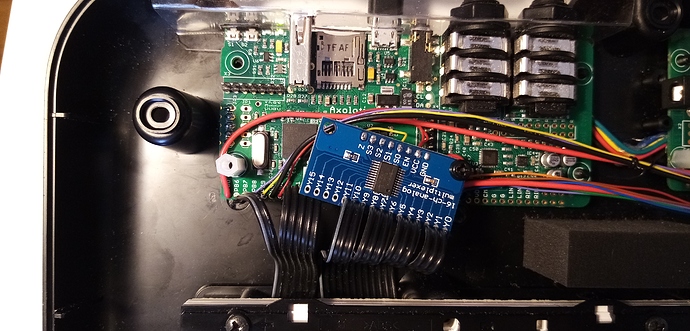

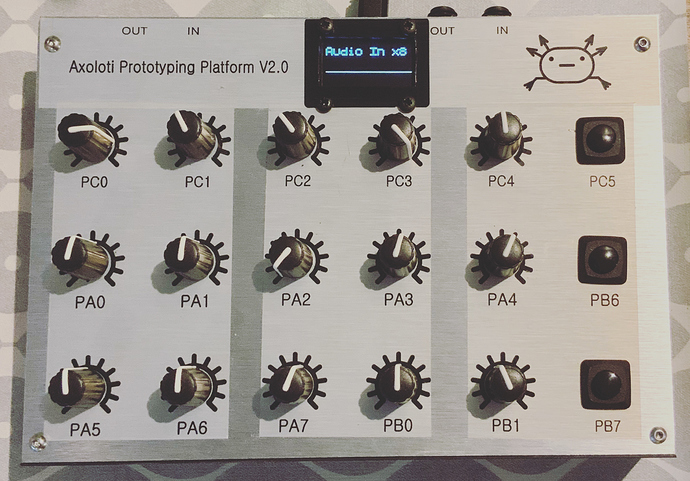
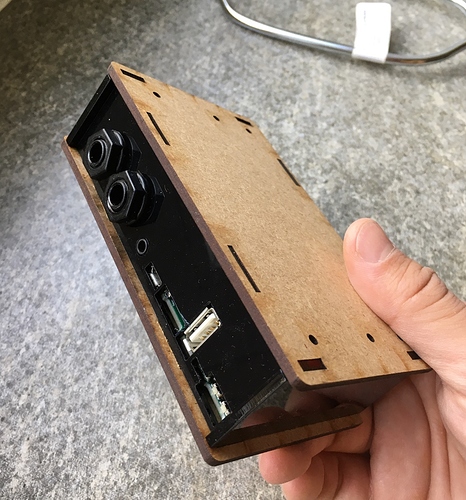
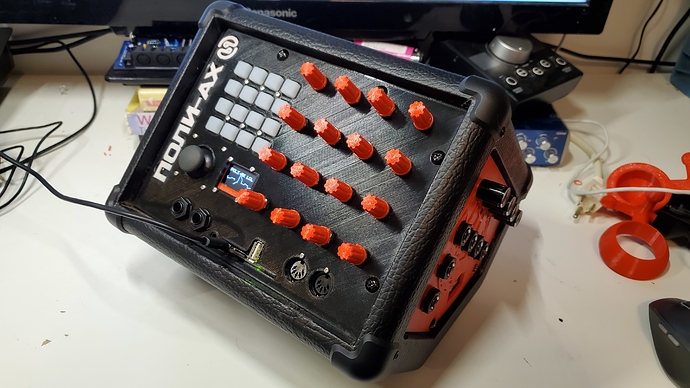
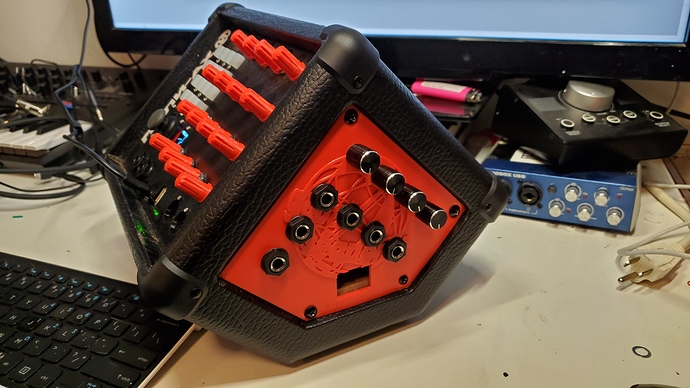
 ).
). 
